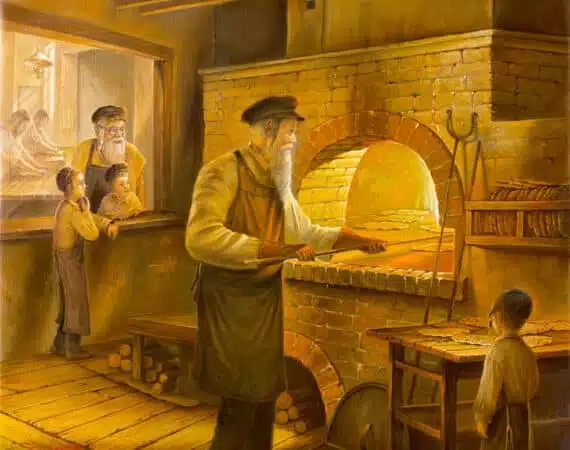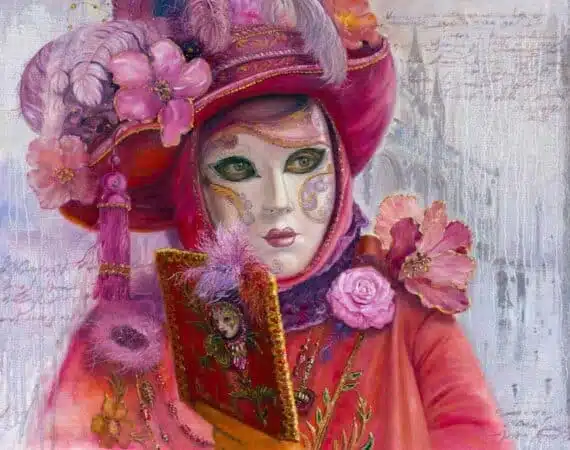https://artlevin.com/product/a-long-walk-to-the-old-city/ "A Long Walk to the Old City" is a beautiful oil painting on canvas that depicts a group of Orthodox Jewish men walking towards the Old City of Jerusalem. The use of warm colors and fine details creates a sense of depth and realism in the scene, while the...
Collection of Jerusalem Paintings available for purchase online
https://artlevin.com/product/sunrise-behind-the-kotel/ The painting depicts the Western Wall, also known as the Kotel, in Jerusalem, Israel, during a sunrise. The image is a mix of warm and cool colors, with the rising sun casting an orange-yellow glow on the ancient stones of the wall. The sky is a mixture of pink...
Colorful Jerusalem: Abstract Art at its Finest!
Jerusalem is not only a historic and religious city, but it is also the birthplace of abstract art. The city's vibrant energy is reflected in the colorful and innovative paintings of its artists. From bold brushstrokes to intricate patterns, Jerusalem's abstract art scene is truly a feast for the eyes....
Jerusalem Temple: A Joyous Artistic Journey!
Jerusalem Temple: A Joyous Artistic Journey! Embark on a journey through the Jerusalem Temple and immerse yourself in the beauty of its artistic wonders. From intricate mosaics to awe-inspiring sculptures, the Temple is a treasure trove of creativity that will leave you feeling joyful and inspired. So come along and...
Paint the Town: Splendor of Jerusalem Paintings
Explore the vibrant beauty of Jerusalem through exquisite paintings!
Masterpieces of Matzah: Passover Paintings
Passover is a time of tradition and celebration, and one of the most iconic symbols of the holiday is matzah. For centuries, artists have depicted the unleavened bread in their works, creating stunning masterpieces that capture the spirit of Passover. From ancient frescoes to modern paintings, these matzah-centric creations showcase...
Discovering Jewish Treasures: NYC’s Judaica Art Scene!
In the heart of the Big Apple lies a hidden treasure trove of Judaica art waiting to be discovered! From ancient texts to modern masterpieces, NYC's Judaica art scene is a must-see for art lovers and history buffs alike. So grab your yarmulke and get ready to explore the rich...
Judaica Joy: A Celebration of Jewish Culture
Judaica Joy: A Celebration of Jewish Culture! Get ready to immerse yourself in the richness and vibrancy of Jewish culture! From lively music and dance to mouth-watering cuisine and unique art, Judaica Joy is a celebration of all things Jewish. Come join the party and experience the joy of Jewish...
Oy Vey! Discover the Joyful World of Judaica
Oy vey! Step right up and discover the vibrant and joyful world of Judaica! From colorful mezuzahs to intricate menorahs, there's something for everyone to celebrate their Jewish heritage in style. So come on in, grab a dreidel, and let's have some fun!
Vibrant Venice Visions: Carnevale Paintings!
Get ready to immerse yourself in the colorful world of Carnevale canvases, where vibrant Venice visions come to life!
Rejoice: Third Temple Rises in Jerusalem!
Rejoice! The long-awaited third temple has risen in Jerusalem, a symbol of hope and faith for all to see. The city shines with renewed glory as we celebrate this momentous occasion!
Brightening the City: Vibrant Contemporary Jerusalem Paintings
Vibrant colors bring Jerusalem alive in contemporary art!
Discover Artistic Treasures in Israeli Paintings!
Explore the unique beauty of Israeli paintings and uncover artistic treasures!
Find Your Perfect Jewish Masterpiece!
Discover the perfect Jewish masterpiece for you!
A Joyous Canvas: Jewish Wedding Paintings
A celebration of love and joy, Jewish wedding paintings bring color and warmth to any room.
Bring Home a Piece of Jewish Art!
Bring home a piece of Jewish culture - art that speaks to the soul!
Celebrating Famous Jewish Paintings!
Celebrating Jewish art and its legacy!
Celebrating Jewish Art: Vibrant Paintings from the Past
Celebrate Jewish art: vibrant paintings from the past!
Painting the Splendor of Jerusalem’s Old City
Painting Jerusalem's Old City: a joyful celebration of its splendor!
Joyful Jewish Art: Delightful Pieces for Sale!
Discover joyful Jewish art to bring delight to your home!


















